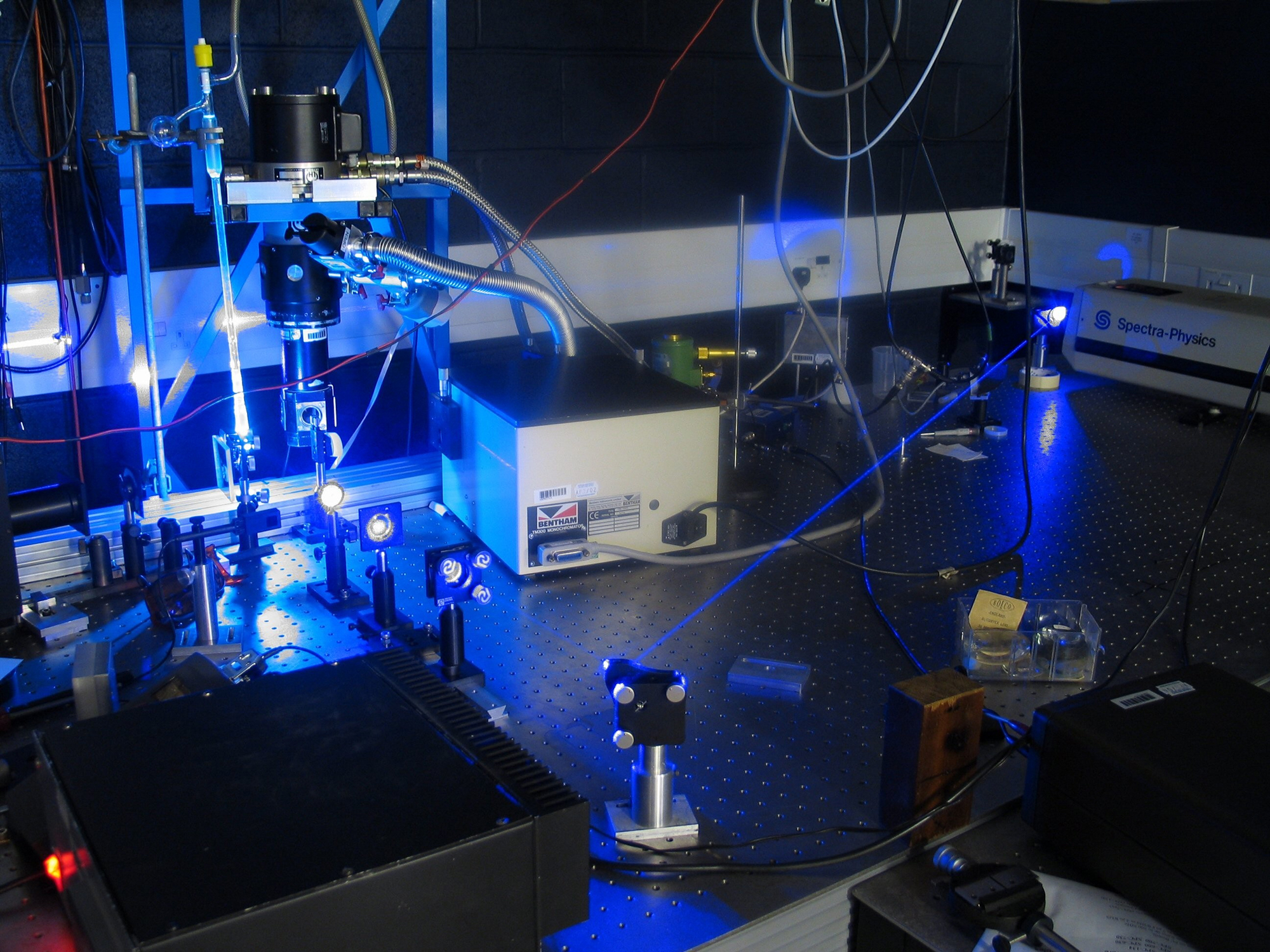Optics & Photonics
Overview
Optics and photonics projects involve research into the generation, detection and manipulation of light. This can range from looking into the effect of light on certain materials, to investigating the properties of materials that emit light. Often, students will be working in research groups such as the Organic Electroactive Materials group. Here, they undertake a smaller part of the collective work being undertaken, working alongside PhD and post-doctoral researchers.
 Fig.1 : Photonic Materials Lab
Fig.1 : Photonic Materials LabStudents working on optics and photonics projects are trained to use high tech equipment within the department and are taught the skills necessary to take optical measurements. Projects in this category often tend to be interdisciplinary, with elements of both physics and chemistry, and allows students to be very hands on with experimental work.
Quotes:
“I really enjoyed my level 4 project as it allowed me to undergo work within a research group that provided support and motivation. I was entrusted to carry out my own experiments and felt like my ideas were valued- this experience has given me insight into the world of academic research and offered the autonomy, empowerment, and flexibility to be able to excel"
Projects:
Projects are updated regularly, but previous project topics have included:
- Extreme States in Semiconductors for Quantum Optics
- Excitons (bound states of electrons and holes) are atom-like states which exist in semiconductors. In some materials we can study highly excited Rydberg excitons. This project collaborates with a Durham research group to implement an experiment on optical spectroscopy of the excitonic materials Cu2O and ZnP2.
- Effects of restricted intra-molecular motion on excited state lifetimes
- A new generation of light emitting charge transfer molecules are being developed for organic light emitting diodes. These have stabilized 90° twists between different fragments of the molecule. This project would two new twisted molecules using optical spectroscopy and time resolved spectroscopy to compare them to learn more about the emission dynamics when we highly restrict intramolecular motion.
- 1-D superradiant J-aggregates
- Organic molecules in solution collide and tend to stick together called aggregation. In some molecules this causes perturbation to their optical properties, absorption and emission strength increase proportionally with the number of molecules in the aggregate, giving narrow linewidths and fast highly intense emission called super radiance. In this project you will study these new j-aggregates in solution and develop ways to transfer them into films.


/prod01/prodbucket01/media/durham-university/departments-/physics/teaching-labs/VT2A9034-1998X733.jpeg)